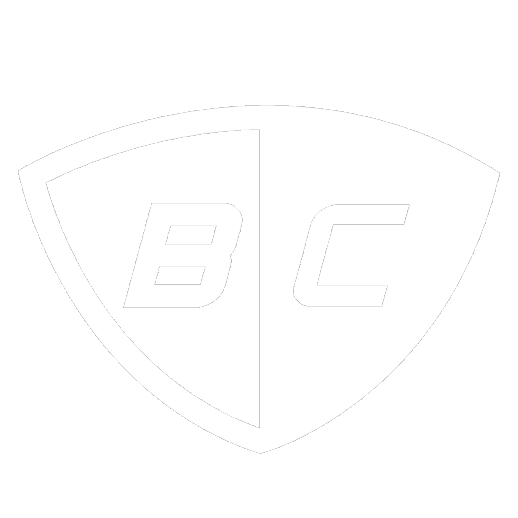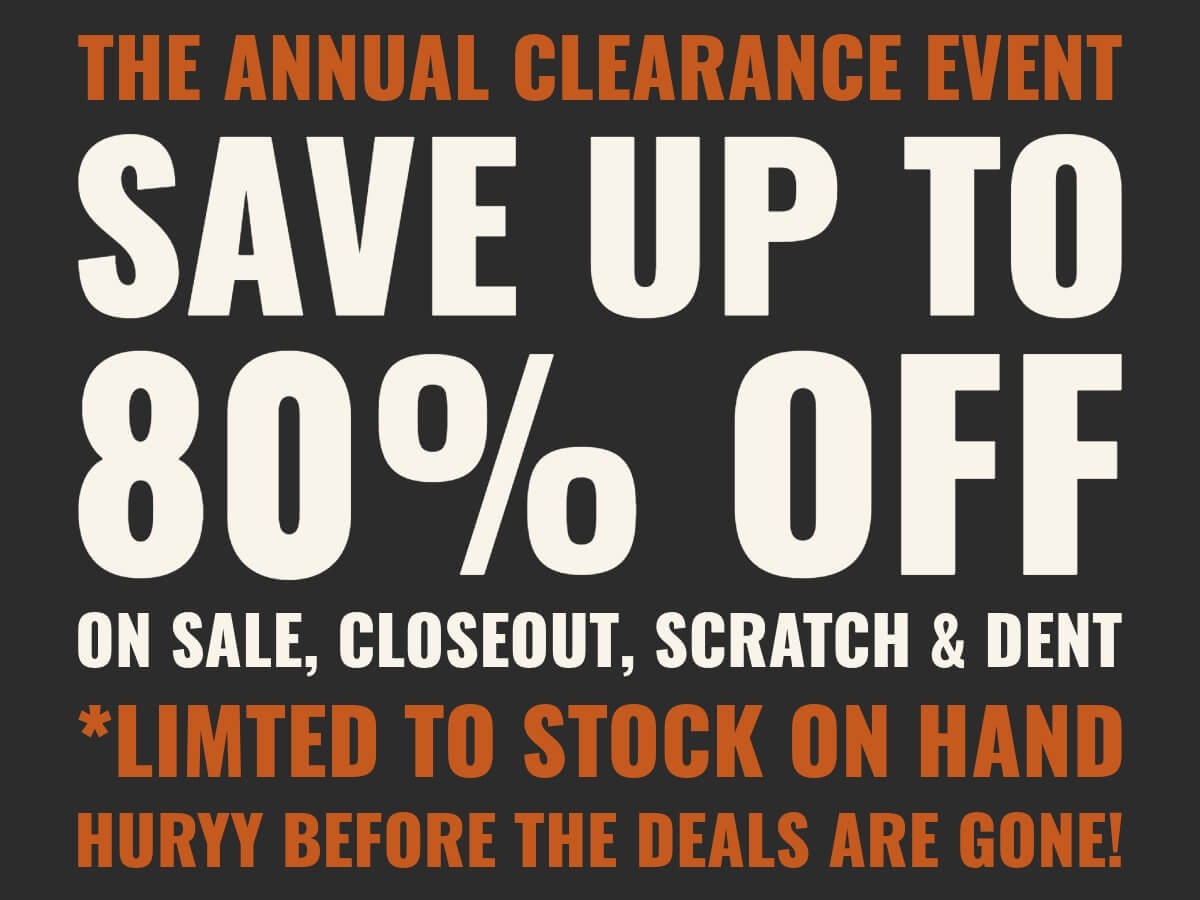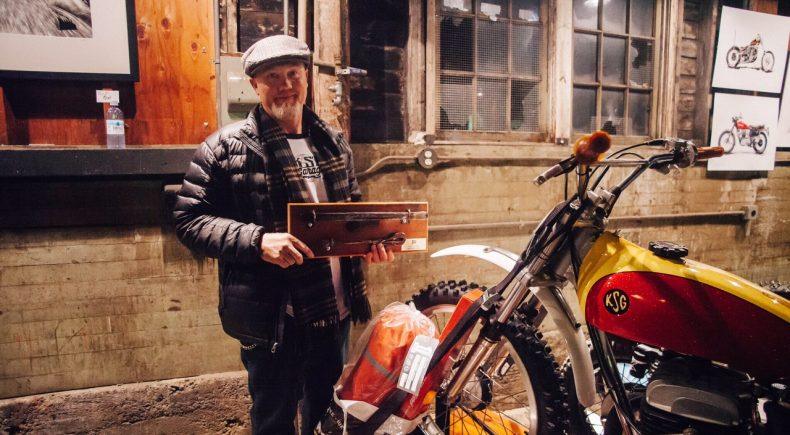
Craig Marleau is the founder of Kick Start Garage. He was invited by Thor Drake to put his latest build “El Taco Truck,” a ’71 BMW R75/5 with a sidecar pulling a ’73 Bultaco Pursang, on display at The One Moto Show 2016, for which he won The Moto Vibes Award from Poler Stuff.
British Customs: What do you believe is the heart and soul of events like The One Moto Show?
Craig Marleau: It’s hard to explain. If you haven’t been before, you don’t understand it. But if you go, it just feels like family. Once you’ve been to the One Show, you feel like a part of something bigger. It’s a celebration; it almost feels like a class reunion in a way—you’re just really happy to see and meet everybody and get to know them. Typically, you go to a show and it’s easy to feel like things are cliquey or you’re an outsider, like you’re an observer. But at The One Show, I don’t think it’s just the builders that feel like they’re part of it: everyone feels like they’re part of the show. What’s really interesting is the social media aspect of it. The One Show is a character itself—it’s alive, and it has a lot of characters within it. Through social media, a lot of people take on a persona, and bikes themselves become like celebrities. There are things you come to know through social media. It’s like Jared from Holiday; he has a signature design, and when you see it from across the room you know it’s his because you’ve seen it shared on social media. Same thing with seeing the CROIG guys, you know who they are. And you get to talk to them like old friends, that’s the class reunion feeling of it. You feel connected to them without really knowing them. It’s the people behind the machines. That’s the biggest deal.

Motorcycles change people. It gives them an identity. At bike night, someone will walk up and ask what you ride, and boom—you’re instantly in a conversation. That’s a big part of it. You’ve got this need to express your passion, because you’ve got that excitement. And so do they. It’s a brotherhood.
BC: What does the motorcycle community mean to you?
CM: The hope of the future. Trends come and go, but having something that’s more than just a trend means the industry is growing, and if the industry grows and we builders all keep working then we can all keep doing what we love. If this was just a short-lived trend and it died off in the next couple years, where would that leave us? We’d just be hobbyists unable to sustain a lifestyle doing what we really want to do. The more the community grows, the more opportunity there is for all of us. It’s like a mini-ecosystem. Without shows like The One Show there wouldn’t be a platform for people who are building these unique bikes to be seen. You can’t take these bikes to purist shows because they’ll just heckle you for chopping up a beautiful vintage Triumph and making it into a customized bike. A lot of these possibilities are due to The One Show. And it all trickles down to Thor Drake; he’s an insightful guy, he understands this community.
BC: Why do you think the moto community is the way it is?
CM: I think it’s just the freedom of expression. There are so many genres of motorcycles and ways people think a motorcycle should be, but The One Moto Show crosses all those boundaries and breaks down all stereotypes. It opens up so many ways of being involved in motorcycles, too: you’ve got dirt track racers, salt flat bikes, bobbers, little bikes, crazy bikes. Everybody there can be anybody. They’re just a person behind that machine. The types of people who go are the real difference between The One Moto Show and a lot of other shows: they’re just there to enjoy some bikes and hang out with other riders.

I think customizing your own bike is something that every rider needs to do. There are enough cookie cutter bikes in the world. If someone changes the seat and pinstripes it, that makes it theirs, and they can be proud of that.
BC: Every builder has a different method they use to get their creative juices flowing, from drawing concept sketches to rearranging parts on the floor of their garage. What’s your rain dance?
CM: I typically don’t grab a bike and then draw a picture of how I want to customize it. I’ve always been inspired by cars, mostly from the 60s and 70s. I usually go to an era and build a bike that’s inspired by a certain car. I take the inspiration from certain things that remind me of that time like colors, or a specific tire. Then I blend all of that into a bike I want to ride.
BC: How hard do you think it is to take the first step towards customizing your own bike?
CM: The hardest part is the commitment. Once you cut the thing up there’s no going back. But I think customizing your own bike is something that every rider needs to do. There are enough cookie cutter bikes in the world. If someone changes the seat and pinstripes it, that makes it theirs, and they can be proud of that.
BC: Where do you think is a good place to start for someone who wants to get into customizing a bike, but doesn’t know where to begin?
CM: Any kind of apprenticeship is a good place to start. But ultimately it depends on what you want to do. Figure out what you’re good at, and then go from there. If you’re good at taking things apart and bolting them back together, then start with that sort of thing: changing handlebars, changing footpeg positions, taking things off and replacing them with other parts. If you’re good with technical things, you can get into the electrical and start wiring in HIDs and LEDs. You can always find someone who’s good at something you can’t do and learn from them. And vice versa, there’s always something you’ll find that you can help them with, from putting forks on to changing tires. Skills are passed from friend to friend. I have a good buddy who’s a better metal guy than I am that I go to to get things welded sometimes, and he comes to me to help get his engines running. We feed off of each other. Figure out what you want to learn, find somebody that knows how to do it, and offer to trade on anything—whether you can watch over their shoulder, trade them a skill for a skill, or even just pay them to help you figure it out.




Leave a comment
All comments are moderated before being published.
This site is protected by hCaptcha and the hCaptcha Privacy Policy and Terms of Service apply.